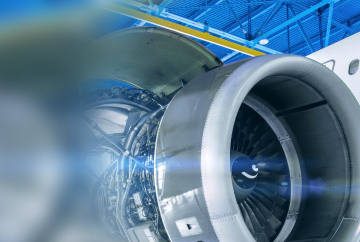Overview
How a global manufacturer of injection molding machines improved business processes, instituted data governance, and brought real-time monitoring by overhauling legacy platforms with assistance from Birlasoft.
Imagine you are the CEO of a firm that designs, manufactures, and markets injection molding machines to a global audience. Your firm's digital strategy is a mosaic of disparate systems with little to no business continuity and no data governance or authorization framework. Isn't this a problem that you want to solve immediately? Our client, a renowned global manufacturer with offices in North America, Europe, and Asia-Pacific, entrusted Birlasoft with solving its operational woes.
Our client underwent a comprehensive transformation of its business systems with Birlasoft as its preferred partner of choice for transformation and integration. Despite working under ambitious deadlines, the company improved all its business processes. This case study outlines the challenges the organization had to overcome, the solution that Birlasoft implemented, and its impact on a broader scale.
The Challenge
Large manufacturing concerns are generally hesitant to upgrade their yesteryear ERP systems due to the purported costs and the complexity involved with such a project. Unfortunately, continuing with such obsolete systems is far more dangerous than risking a transformation due to the vagaries of both customers and competitors in the prevailing economic slump. Our client caught on to this early and sought to migrate to SAP along with its famed C4C integration. Some of the seemingly insurmountable challenges that our clients faced during the migration are:
Incoherent Business Systems
The client's existing systems were not configured to work in unison, and this caused several inefficiencies in each area (inventory, manufacturing, et al.) that resulted in a combined effect of lowering productivity by a significant margin. Furthermore, these systems were architected in a manner that did not accommodate modularity, which made it impossible to implement relevant updates and patches.
Inefficient Data Management
The client's ERP stack did not have a master data management system, let alone a data governance framework. In our current climate of rampant data breaches and cybercrimes, this was a gaping vulnerability that the client had to address. Because of their rigidity, Yesteryear systems couldn't accommodate the latest security protocols, thereby risking the company's operations and reputation.
Lack of Standardized Processes
Legacy systems, at the time of implementation, were fairly barebones in the capabilities that they provided. They did not come with templates for standardized systems or procedures in industrial settings, nor did they allow users to alter authorizations and security matrices. All of this caused added operational chaos for the client.
The Solution
Given the precarious state of the client’s ERP systems, the solution needed to address a series of complex problems while operating on highly aggressive timelines. This expedited approach enabled them to get up to speed and prime themselves to respond to the fickle nature of the global market.
Upon associating with Birlasoft, our client’s operations were overhauled to the point where the entire operation was akin to that of a well-oiled machine with multiple interconnected parts working in harmony to produce business results. Their teams could harness the power of the SAP HANA suite reasonably rapidly. Highlights of this solution included:
Methodical approach to expedite the cloud-powered transformation
The solution architects at Birlasoft collaborated with all the relevant stakeholders and process owners across all the functions to understand the nuances of the problems plaguing multiple facets of the business. After acquiring a thorough understanding of the task at hand, we were able to formulate a plan that would not only Fastrack the migration process but also ensure existing systems would be untouched for the duration of the transformation.
Solution modeling and architectural constraints
We ditched the client's existing point-to-point approach and favored an approach that would accommodate the client's high usage of the MRP and variant configuration functions. This proved to be challenging, but upon successful implementation, the client could reap the benefits of both COPA and detailed costing, which resulted in enhanced real-time productivity.
Planning the delivery model
Birlasoft was keen on infusing cloud capabilities into the client's revamped ERP system to ensure that it would be sufficiently future-proof. The implementation featured 13 different SAP modules that were chosen in conjunction with the client’s goals and were heavily localized to ensure smooth functioning.
Value Realized
Our methodical approach, coupled with the carefully planned delivery model and stellar execution, resulted in improved business functions across multiple facets of the organization. The second most important goal reached was the implementation of a master data management framework that made it easier to collate and work with data from different branches. All of this endowed the client with the ability to monitor real-time manufacturing status while also having a clear line of sight on the costs incurred on items that were in progress.
Now operating in digital mode, the client's field operations stood streamlined and brought major gains to the bottom line.
The Impact
Our client's decision to partner with Birlasoft to migrate to the latest software stack allowed them to address many years of technical debt and leapfrog to a position where they could compete with the most technologically sophisticated competitors on equal footing. The new localized and multi-tiered class architectures are fully primed to support all business processes that the client would introduce at a breakneck pace.
The project was accomplished in a matter of 4 months and resulted in improved business processes across several organizational functions. The client now had a proper data management and data governance framework in place and no longer had to worry about a lack of visibility into the master data sources across different locations. Most significantly, the client could now avail real-time manufacturing status along with a complete insight into the cost incurred on WIP items.

